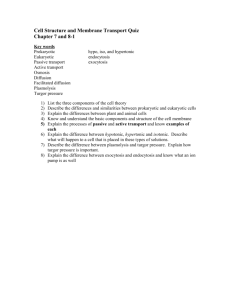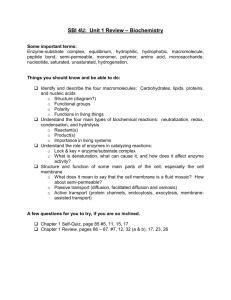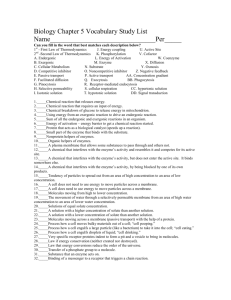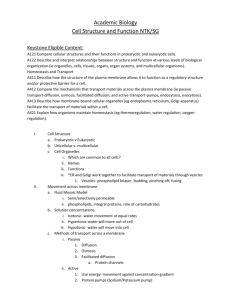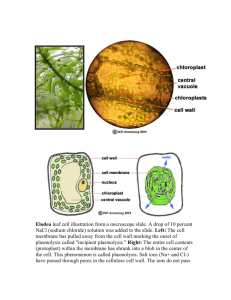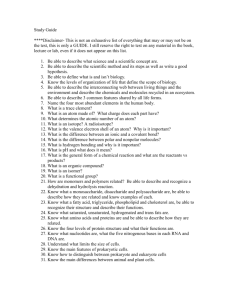Cell Structure and Membrane Transport Quiz Chapter 7 Key words
advertisement
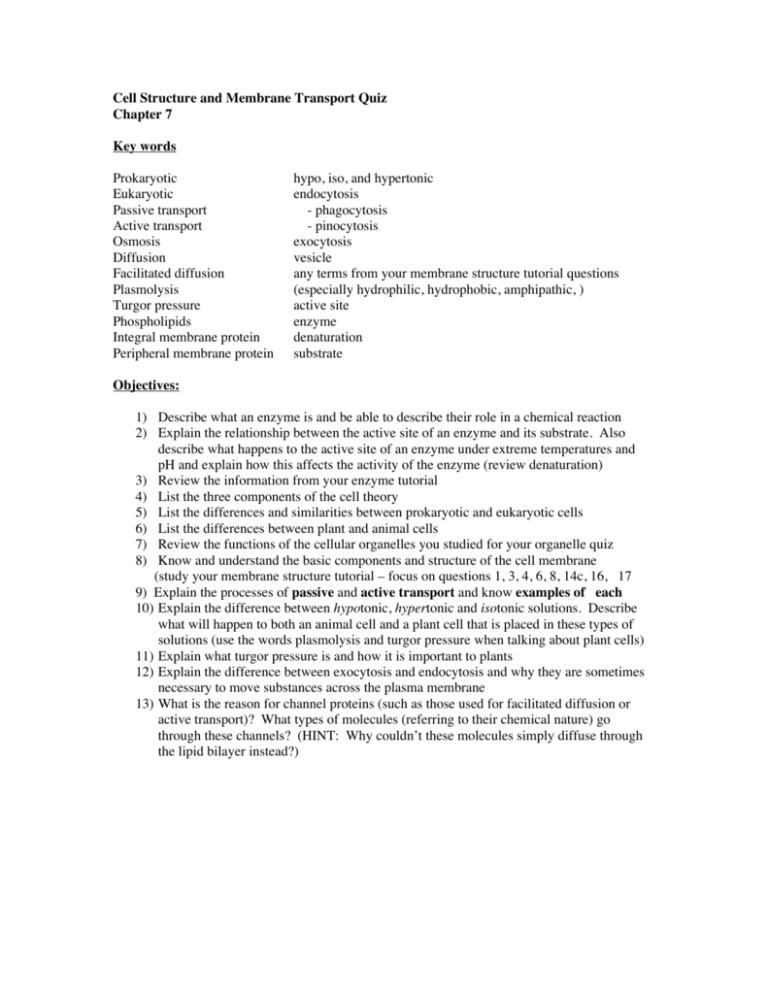
Cell Structure and Membrane Transport Quiz Chapter 7 Key words Prokaryotic Eukaryotic Passive transport Active transport Osmosis Diffusion Facilitated diffusion Plasmolysis Turgor pressure Phospholipids Integral membrane protein Peripheral membrane protein hypo, iso, and hypertonic endocytosis - phagocytosis - pinocytosis exocytosis vesicle any terms from your membrane structure tutorial questions (especially hydrophilic, hydrophobic, amphipathic, ) active site enzyme denaturation substrate Objectives: 1) Describe what an enzyme is and be able to describe their role in a chemical reaction 2) Explain the relationship between the active site of an enzyme and its substrate. Also describe what happens to the active site of an enzyme under extreme temperatures and pH and explain how this affects the activity of the enzyme (review denaturation) 3) Review the information from your enzyme tutorial 4) List the three components of the cell theory 5) List the differences and similarities between prokaryotic and eukaryotic cells 6) List the differences between plant and animal cells 7) Review the functions of the cellular organelles you studied for your organelle quiz 8) Know and understand the basic components and structure of the cell membrane (study your membrane structure tutorial – focus on questions 1, 3, 4, 6, 8, 14c, 16, 17 9) Explain the processes of passive and active transport and know examples of each 10) Explain the difference between hypotonic, hypertonic and isotonic solutions. Describe what will happen to both an animal cell and a plant cell that is placed in these types of solutions (use the words plasmolysis and turgor pressure when talking about plant cells) 11) Explain what turgor pressure is and how it is important to plants 12) Explain the difference between exocytosis and endocytosis and why they are sometimes necessary to move substances across the plasma membrane 13) What is the reason for channel proteins (such as those used for facilitated diffusion or active transport)? What types of molecules (referring to their chemical nature) go through these channels? (HINT: Why couldn’t these molecules simply diffuse through the lipid bilayer instead?)
